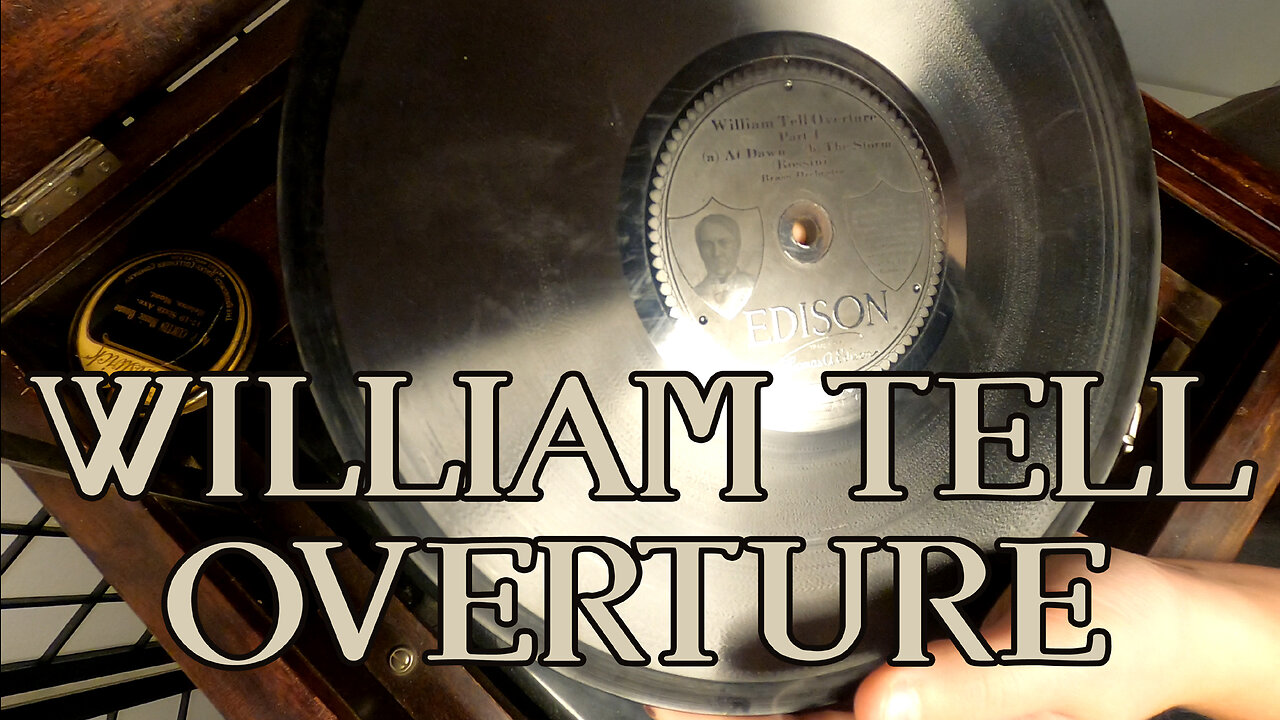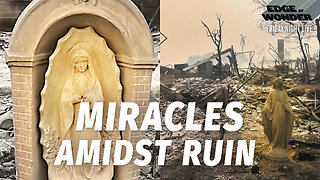Premium Only Content

1918 Edison Phonograph - William Tell Overture - Side 1
The "William Tell Overture" is one of the most famous and recognizable classical compositions, composed by Gioachino Rossini, an Italian composer, in 1829. It serves as the overture to Rossini's opera "William Tell," also known as "Guillaume Tell" in French. The opera, based on Friedrich Schiller's play of the same name, tells the story of William Tell, a legendary Swiss folk hero.
Here are some key points about the "William Tell Overture":
1. Structure: The overture is divided into four distinct parts, each with its own tempo and character. These sections are often referred to as "preludes."
a. Prelude: A slow, pastoral section featuring a solo cello, which represents the Swiss countryside.
b. Storm: A fast and dramatic section, depicting an approaching thunderstorm.
c. Ranz des Vaches: A serene, pastoral melody representing the Swiss cowherds.
d. Finale: Perhaps the most famous part of the overture, this section is a high-energy galop with a prominent horn fanfare. It represents the heroic and triumphant aspects of the story.
2. Popularity: The "William Tell Overture" is famous for its exhilarating and dynamic qualities, particularly the "Finale" section. It has been widely used in popular culture, including in films, television, commercials, and even cartoons. The galloping rhythm of the finale is often associated with scenes involving horseback riding.
3. Iconic Usage: One of the most iconic uses of the "William Tell Overture" is in "The Lone Ranger," a popular American radio and television program that featured a masked hero riding on horseback. The overture served as the show's theme music and contributed significantly to its enduring popularity.
4. Musical Innovation: Rossini's composition was groundbreaking in its time due to its use of unusual instruments, such as the triangle and the bass drum, to create thunderstorm effects. It also showcases Rossini's skill in orchestrating a wide range of emotions and moods within a single piece.
The "William Tell Overture" remains a beloved and frequently performed piece in the classical music repertoire. Its lively and memorable melodies continue to captivate audiences around the world, making it a timeless classic.
This is the recording of a song written by Jack Mahoney and Percy Wenrich in 1914, played on a 1918 Edison Phonograph. When You Wore a Tulip and I Wore a Big Red Rose written by Jack Mahoney, Percy Wenrich.
*****************
The 1918 Edison Model C150 is an 80 RPM Phonograph that sold for $175 in 1918. That is today's equivalent of approximately $4000. 18,000 of these phonographs were manufactured.
*****************
In the early 20th century, Edison phonographs were well-established as one of the leading brands in the industry. They were known for their high-quality sound reproduction and durability. By 1918, many Edison phonographs were equipped with electric motors, which improved their reliability and made them more convenient to use compared to earlier spring-wound models.
Edison phonographs typically played cylindrical records, which were different from the flat, disc-shaped records used by competitors like the Victor Talking Machine Company (which later became RCA Victor). Edison's cylinder records were known for their fidelity, and the company had a vast catalog of music and spoken word recordings.
However, by the late 1910s, the popularity of flat disc records was on the rise, and Edison faced increasing competition from companies like Victor. This led to a decline in the market share of Edison phonographs.
In summary, the Edison Phonograph Company in 1918 was producing high-quality phonographs known for their durability and sound quality, but they were facing stiff competition from companies using flat disc records, which eventually led to a decline in their market presence.
Contact AOWS at: anythingoutdoorswithsteve@gmail.com
#classicalmusic #oldmusic #recording
-
 6:35
6:35
Quest for Happiness
11 months agoA Great Adventure: Journey Across Wondrous Lands - On The March 🐜 🐜 🐜 🐜
335 -
 LIVE
LIVE
I_Came_With_Fire_Podcast
12 hours agoTrump SABOTAGE, LA FIRE CHIEF SUED, and BIDEN’S LAST F-U!
328 watching -
 2:59:47
2:59:47
Joker Effect
4 hours agoUkraine in a video game? Hardest thing I have done. S.T.A.L.K.E.R.2 Heart of Chornobyl,
43K4 -
 1:15:22
1:15:22
Flyover Conservatives
1 day agoEczema, Brain Fog, B.O., and Gas… Eating Steak and Butter Creates Ultimate Health Hack - Bella, Steak and Butter Gal | FOC Show
37.4K1 -
 51:58
51:58
PMG
7 hours ago $1.14 earned"Can the Government Learn from Elon Musk’s 70% Labor Cut? A Deep Dive into Inefficient Agencies"
25.7K -
 LIVE
LIVE
Amish Zaku
7 hours agoRumble Spartans #10 - New Year New Maps
194 watching -
 1:04:58
1:04:58
In The Litter Box w/ Jewels & Catturd
1 day agoNo Tax On Tips! | In the Litter Box w/ Jewels & Catturd – Ep. 722 – 1/17/2025
145K32 -
 5:35:39
5:35:39
Dr Disrespect
13 hours ago🔴LIVE - DR DISRESPECT - WARZONE - CRAZY CHALLENGES
167K33 -
 1:16:30
1:16:30
Edge of Wonder
9 hours agoLA Fire Updates: Miracles Amidst the Devastation
42K13 -
 54:54
54:54
LFA TV
13 hours agoBanning Mystery of the Ages | TRUMPET DAILY 1.17.25 7pm
35.8K7